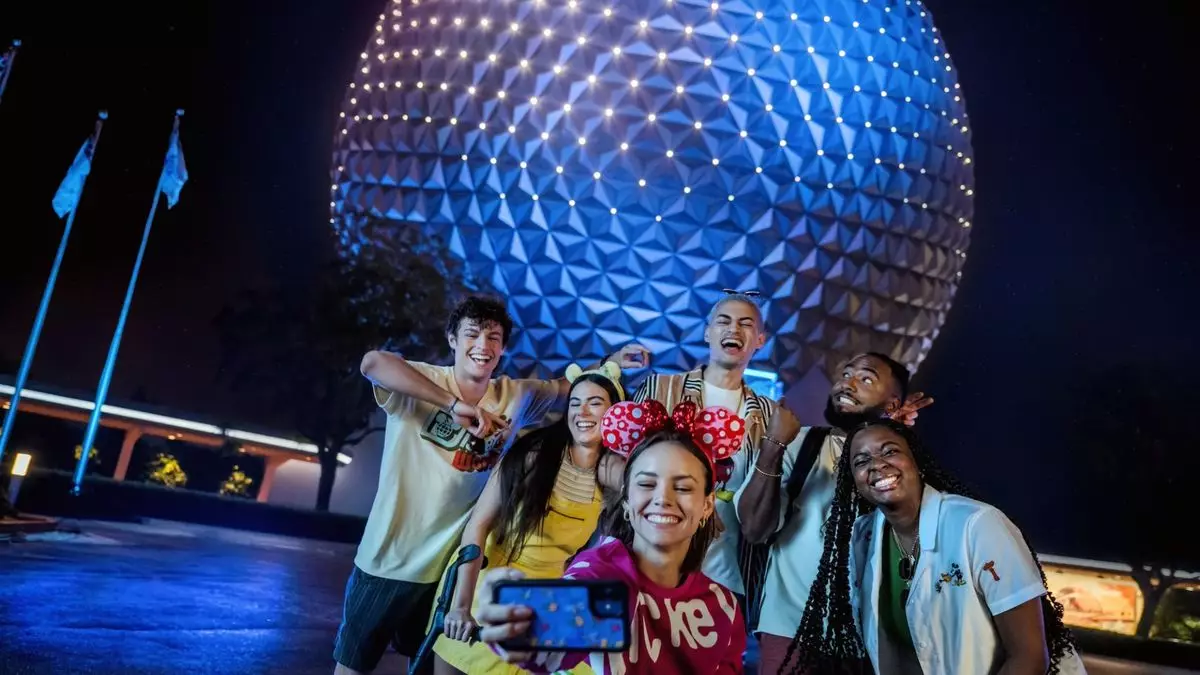Disney’s strategic approach to the Lightning Lane Premier Pass reveals much about its current operational philosophy and market positioning. Launched last October, the pass allows theme park visitors to bypass the regular lines for attractions at Disney parks, a perk that is becoming increasingly sought after in the modern amusement park experience. However, the careful and measured strategy employed by Disney raises significant questions about its long-term implications for customer satisfaction and the company’s bottom line.
The decision to limit the initial sales of the Lightning Lane Premier Pass to guests at select Disney hotels was undoubtedly a means of creating an aura of exclusivity around the product. By granting early access to hotel guests, Disney reinforces a marketing strategy aimed at boosting hotel occupancy while testing the waters of the Lightning Lane market. In this environment, however, guests staying at non-Disney properties may feel alienated. With sales opening to the wider public only three days before admission, there’s a distinct possibility that those who aren’t paying premium rates for a hotel room will find the tickets sold out, leaving them unable to access a valued experience.
This approach reflects a concern for customer experience, as highlighted by Disney CFO Hugh Johnston. By adopting a “gently” progressive marketing technique, Disney indicates their intention to learn and adapt from initial customer responses, but this cautiousness may come at the cost of potential revenue. For pass holders and prospective buyers alike, a sense of urgency and exclusivity can enhance appeal, yet it also risks alienating potential customers who feel left out of an essential aspect of the Disney experience.
The pricing structure of the Lightning Lane Premier Pass itself varies considerably based on timing and location, which could lead to confusion for consumers. For example, at the Walt Disney World Resort, prices fluctuate between $119 and $399 per guest, while at Disneyland, the cost ranges from $300 to $400. This system may appeal to budget-conscious visitors during off-peak periods while simultaneously catering to those willing to pay a premium during peak seasons. However, the lack of transparency in how these prices are determined could deter potential buyers, especially first-time visitors who may not fully grasp the nuances of Disney’s dynamic pricing strategy.
Moreover, with regular replacement of traditional single-use fast passes with premium offerings, one must wonder about the repercussions on customer loyalty. As consumers become accustomed to the ever-increasing costs associated with access to attractions, they may seek alternatives or forego trips altogether. While the immediate revenue from high-ticket sales can be enticing, sustaining long-term customer relationships is critical for Disney’s success.
The company’s recent fiscal report indicates a mixed bag of results, with a mere 3% growth in revenue from Disney Experiences. While Disney remains a juggernaut in the entertainment sector, it is worth noting that its operating income has not seen a corresponding rise. Factors like the impacts of hurricanes and costs tied to newly launched ships have certainly played a role, serving as reminders that operational and weather-related challenges can introduce significant volatility into the earnings picture.
In light of this complexity, one must consider whether the initial cautious approach to the Lightning Lane Premier Pass has further financial implications. By not fully capitalizing on the demand for streamlined experiences within its theme parks, Disney may be missing an opportunity to bolster its revenue while enhancing visitor enjoyment and overall park operations.
As Disney celebrates milestone anniversaries for various parks and prepares to launch new cruise line ships, the path ahead seems fraught with challenges. The success of the Lightning Lane Premier Pass will depend on Disney’s ability to balance premium offerings with accessibility. As competition within the entertainment space continues to grow, maintaining customer loyalty will require more than a simple pass; it will necessitate a holistic approach that values every visitor’s experience.
While the Lightning Lane Premier Pass may hold promise as a revenue-generating feature, its value lies in Disney’s ability to craft a visitor experience that resonates broadly in today’s fast-paced entertainment landscape. Careful consideration of pricing, access, and customer experience will be vital as Disney navigates its path forward in the dynamic world of theme parks.


Leave a Reply